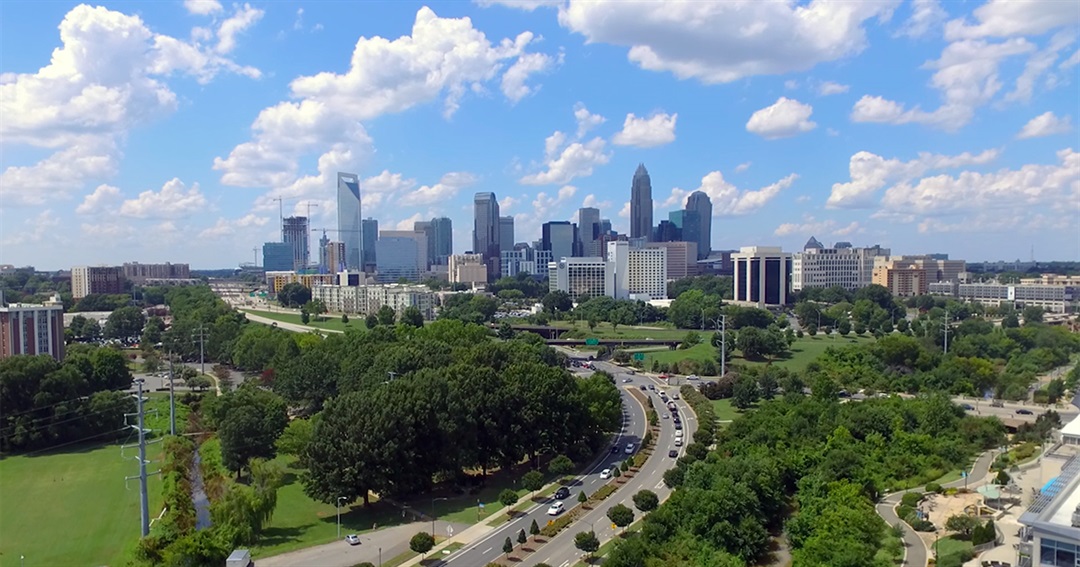Charlotte Nc Airport Fundamentals Explained
Charlotte Nc Airport Fundamentals Explained
Blog Article
Not known Details About Charlotte Nc Airport
Table of ContentsNot known Incorrect Statements About Charlotte Nc Airport Map Not known Details About Charlotte Nc Apartments Charlotte Nc Apartments Fundamentals ExplainedSome Known Facts About Charlotte Nc.6 Easy Facts About Charlotte Nc Apartments For Rent Explained
It was in this context that antebellum Charlotte existed. As late as 1860, North Carolina's biggest town, the port of Wilmington, had only 9,552 people. The port of Charleston was the area's just large city, with 40,519 locals; South Carolina's 2nd largest city was the capital of Columbia, with yet 8,052.Charlotte was back in the Piedmont and 10 miles from the nearby river. Its gold mining interests and brand-new railroads made it North Carolina's 6th largest "city location," but it was little bit greater than a village with 2,265 individuals, a sign of the state's rural personality. The Civil Battle changed the area's anti-urban bias.
Atlanta Constitution editor Henry Grady took a trip the area stirring Southerners to activity with the woeful tale of a Georgia interment: "They reduced with strong marble to make his tomb; and yet a little gravestone they place over him was from Vermont. They buried him in the heart of an ache woodland, and yet the ache casket was imported from Cincinnati.
Charlotte Nc Airport Hotels Things To Know Before You Get This
:max_bytes(150000):strip_icc()/GettyImages-513709793-2000-c0dc9e2bdcd244f6a63e553c0782beb2.jpg)
This motion for a "New South," as supporters announced it, had its beginnings also before the swan song was fired in 1865, and gained energy in the Repair age of the late 1860s and early 1870s. After the 1870s anxiety finished, the motion developed. By that time a new post-war generation of New South leaders remained in control.
The battle-cry of the New South era was the slogan "Bring the Mills to the Cotton." The South's climate and dirt had made it the USA' cotton grower given that 1793, but the mills that turned the cotton into apparel were largely located in New England. There had actually been a number of excellent factors for this.
Capitalists started to heed the New South's boosters' sobs and construct their mills in the South. By the time the early New South leaders transformed their power over to the next generation in the 1910s and 1920s, the modification in instructions had been achieved.
The 9-Minute Rule for Charlotte Nc Airport
Money observed, "little much more use for them than a hog has for a morning layer." Currently a leader in cotton profession, Charlotte entered the cotton production period after the 1870s clinical depression. In 1880, the city got its initial successful cotton mill. The Charlotte Cotton Mill established by R. M. and D.
Calhoun, Tompkins hailed Edgefield County, South Carolina, and a paradigmatic New South leader who went North to make a civil design degree at Rensselaer Polytechnic Institute. He returned southern to the original source Charlotte accountable of selling Westinghouse vapor engines and equipment to the new mills and market of the area.
He spoke widely prompting automation, devised financial investment strategies to draw in a knockout post new mills, assisted set up universities at Clemson and Raleigh to teach textile designers and drug stores, and lobbied strenuously for beneficial regulation. Even Atlanta, which considered itself the center of the New South, recognized Tompkins' pre-eminence. Atlanta Constitution editor Clark Howell stated emphatically that Tompkins "did more for the commercial south than any kind of other male." Today chroniclers take into consideration Tompkins one of one of the most crucial of the New South leaders.
The Definitive Guide to Charlotte Nc
It was the initial mill owned and operated, as well as erected, by his business, and Tompkins utilized it to show his originalities. These included his idea that mill employees with their rural histories need to not be corrupted by nearness to town, indoor pipes, or quarters a lot more large than "one operative for every area of the house." The best-preserved house in the Atherton mill town has actually been designated a regional Historical Property: a three-dimensional illustration from his significant 1899 book, "Cotton Mills: Business Attributes." The boom of the 1880s drew in various other cotton-related markets.
A 5th cotton mill opened in 1892, Highland Park Manufacturing Business # 1, headed by W. E. Holt and C. E. Johnston. With all this commercial development the community of Charlotte swiftly became a small city. If D. A. Tompkins had been the New South leader most in charge of Charlotte's industrial development, Edward Dilworth Latta was the leading force in the community's physical makeover into a city.

One followed its above wire the length of Trade Road from McDowell Street on one edge of community to the railway station on West Trade on the other. At the Square it crossed the 2nd track, which ran on Tryon Road from the Carolina Central station at Twelfth Street all the method out South Tryon.
Not known Details About Charlotte Nc Airport
They maintained precisely going out into the farmland where the Four Cs were developing Dilworth. Dilworth was Charlotte's first residential area, the beginning of the city we know today. Entrepreneurs had been travelling to their new suv homes in the large cities of the North considering that the 1870s, and the New South leaders were determined to bring this new urban style to Charlotte.
This review additionally consists of the re-introduction of streetcars in Charlotte throughout 2015. By the very early 1890s, Charlotte was a little city with big-city ambitions. The 1890 demographics counted a commendable 11,557 individuals, yet still less than the resources of Columbia and Raleigh and much behind the Carolinas' ports of Charleston and Wilmington.
Report this page